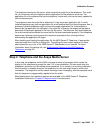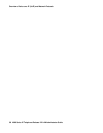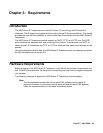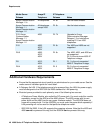
Overview of Voice over IP (VoIP) and Network Protocols
36 4600 Series IP Telephone Release 2.2 LAN Administrator Guide
Initialization Process
These steps offer a high-level description of the information exchanged when the telephone
initializes and registers. This description assumes that all equipment is properly administered
ahead of time. This description can help you understand how the 4600 Series IP Telephones
relate to the routers and servers in your network.
Step 1: Telephone to Network
The telephone is appropriately installed and powered. After a short initialization process, the
telephone identifies the LAN speed and sends a message out into the network, identifying itself
and requesting further information. A router on the network receives this message and relays it
to the appropriate DHCP server.
Step 2: DHCP Server to Telephone
The DHCP file server provides information to the telephone, as described in DHCP and File
Servers on page 47. Among other data passed to the telephone is the IP Address of the TFTP
or HTTP server, which is crucial for the next step.
Step 3: Telephone and File Server
Beginning with Release 2.2, 4600 Series IP Telephones can download script files, application
files, and settings files from either a TFTP, HTTP, or HTTPS server. The HTTPS server applies
only if the server supports Transport Layer Security (TLS) encryption. If you have a mixture of
Release 2.2 and pre-Release 2.2 telephones, you can use either:
● TFTP servers only.
● Both TFTP and HTTP servers, with TFTP running phones with older releases and HTTP
for telephones running Release 2.2 and later software.
A telephone that supports HTTP will attempt to access the HTTP server (if administered), and, if
successful, will not attempt to access the TFTP server (if administered).
The script files, application files, and settings files discussed in this section are identical for
HTTP and TFTP servers. The general downloading process for those files is essentially the
same. One exception is that when you use an HTTPS server, a TLS server is contacted first.
Therefore, we use the generic term “file server” here to mean both “TFTP server” and “HTTP
server.”


















